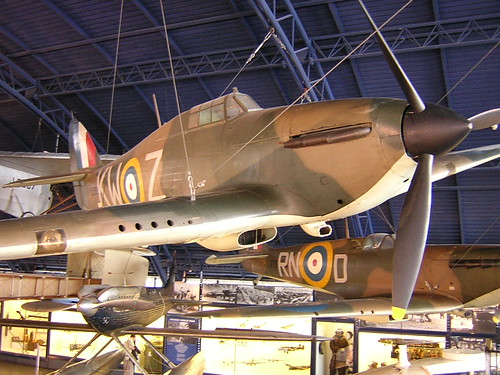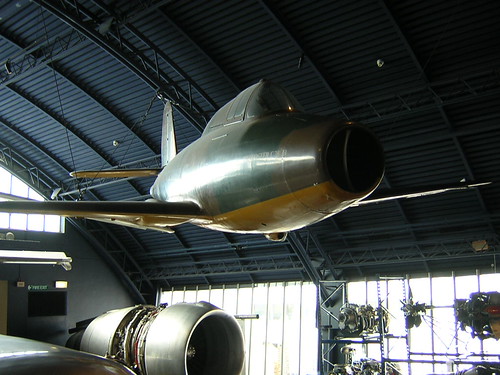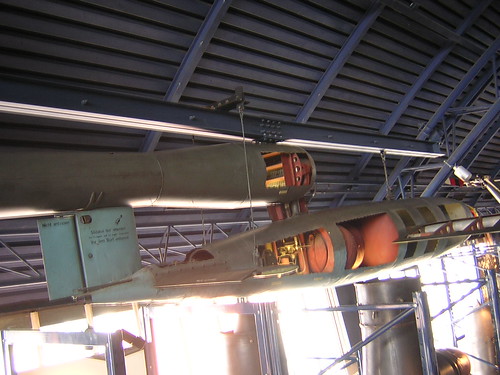
Science Museum: World War II Airplanes
On my recent visit to the London Science Museum, amongst computing, rockets and VTOL exhibits, I also came across some historic British airplanes in the Flight Gallery. In this post I'll focus on the World War II era airplanes that played a pivotal role in defending the skies above Britain.
Spitfire and Hurricane
The Supermarine Spitfire and Hawker Hurricane are examples of Britain's finest fighter airplanes that, as Winston Churchill so aptly said, gave rise to Britain's "... finest hour." He was speaking just prior to the Battle of Britain (10 July to 31 October, 1940) that was waged in the air over England during World War II, pitting the outnumbered RAF against the Luftwaffe.
The Spitfire and the Hurricane played starring roles in the Battle of Britain. The Spitfire was the 'thoroughbred' speedster with its specially designed low-drag elliptical wing. The 'workhorse' Hurricane had a more traditional thicker wing, incurring more drag and reducing its top speed relative to the Spitfire. Although the Spitfire was considered the glamour child of the two airplanes, the Hurricane recorded the higher number of victories against the Luftwaffe.
Gloster Whittle
The Gloster Whittle E.28/39 was Britain's first jet airplane to fly in 1941. It was a test bed for Frank Whittle's new jet engine.
Though the Gloster Whittle wasn't particular fast with a top speed of only 338mph (the piston engine Spitfire's top speed was 378mph), it did provide essential data on the new jet engine, which was incorporated into the first British jet fighter - the twin-engine Gloster Meteor.
The first role for the Meteor was chasing and destroying the V-1 flying bomb. In 1945 a modified Meteor set the world air speed record of 606mph - the first time a jet powered airplane had set the record. The rest, as they say, is history, whereby jet engines went on to totally displace piston engines in fighter airplanes by the 1950s.
Recent blog posts
- CFD Simulates Distant Past
- Background on the Caedium v6.0 Release
- Long-Necked Dinosaurs Succumb To CFD
- CFD Provides Insight Into Mystery Fossils
- Wind Turbine Design According to Insects
- Runners Discover Drafting
- Wind Tunnel and CFD Reveal Best Cycling Tuck
- Active Aerodynamics on the Lamborghini Huracán Performante
- Fluidic Logic
- Stonehenge Vortex Revealed as April Fools' Day Distortion Field





Comments
jet engine first record breaker
How does the Me 262 figure into record breaking speed?
Unofficially Faster
According to the Me 262 Wikipedia entry:
"During testing, the Me 262 was found to have advantages over the early models of the Gloster Meteor. It was faster, had better cockpit visibility to the sides and rear (mostly due to the canopy frame and the discoloration caused by the plastics used in the Meteor's construction), and was a superior gun platform, as the early Meteors had a tendency to snake at high speed and exhibited 'weak' aileron response. The Me 262 did have a shorter combat range than the Meteor."
Once the war ended so too did development of the Me 262, so I guess it was never flown in any 'official' record attempts.